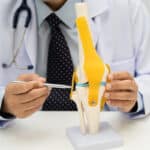
In general, the cardiovascular system is able to grow much faster than our musculoskeletal system can in response to exercise. It can lead to more and more stress than our tendons, muscles, and bones are prepared to contribute to fatigue and injury. Sports medicine can also be helpful in this regard.
Too much, too rapidly, has a strong negative effect not only on our damage risk but on our immune sleep quality, health, appetite, and mood as well.
So how do we plan our exercise to get us out, to keep us safe and fit, and to minimize injury risk?
The longest rule is the ‘10%’ rule and many of us are the easiest to apply for. No more than 10 percent increase your activity on weekdays. You can only run 22 km if, for example, you have 20 km in week 1 in week two.
In recent years team sport researchers have started to examine these vulnerabilities and built a model to try to eliminate lesions. This model was developed by Gabbett 2016 and suggested by Hulin et al 2014.
The current weekly workout burden is not more than 30 percent higher than my previous 4-week average.
The goal is to have a ‘sweet spot’ ratio, in which we can exercise more on a weekly basis (beyond 1) to make fit but to decrease the risk of injury by not increasing too much (beyond 1.3). The injury frequency was higher than the 1.3 value observed by Gabbett’s team. For instance
-
If you are going 70,000 steps a week for four weeks, then the average load is 70,000.
-
If you do a hundred thousand steps on week 5, which is my ‘acute’ load.
-
Your week 5 ratio is 1:1.42 which might put you at “risk.”
EWMA
This was suggested in recent years that workouts and preparation would be controlled better in order to avoid overtraining and those injuries. According to research conducted by Williams et al 2017, exponential weighing will build a more meaningful image by prioritizing the latest amount of work performed in the ‘chronic load’ measurement and a relative weighting decrease from the present day. It is intuitive that the race you did five days ago increased your risk of injury more than 15 or 25 days ago, but many models do not.
Book a schedule with Oklahoma Spine & Pain Management to know how sports medicine can help you get rid of the pain, along with effective exercises.
**Disclaimer: This content should not be considered medical advice and does not imply a doctor-patient relationship.






